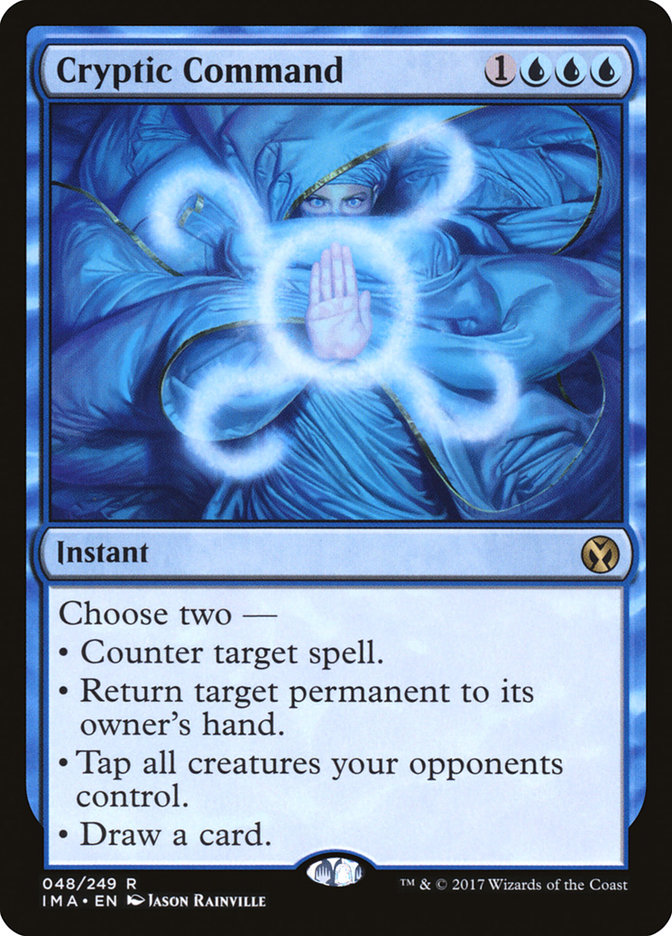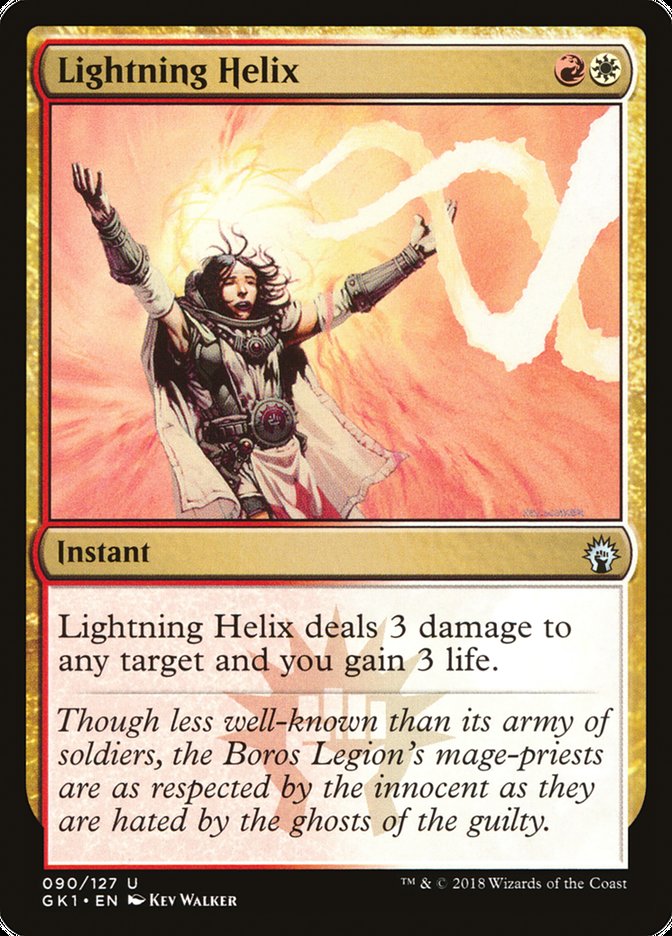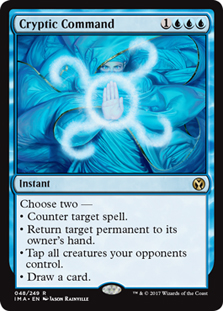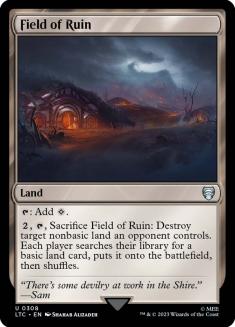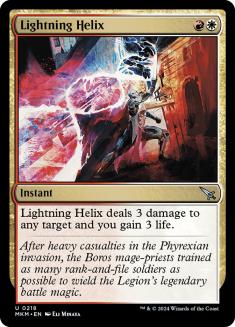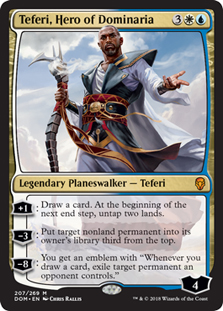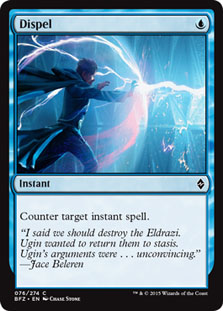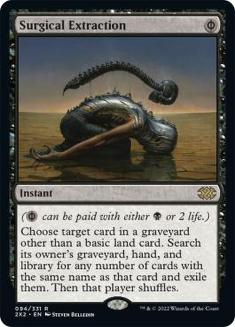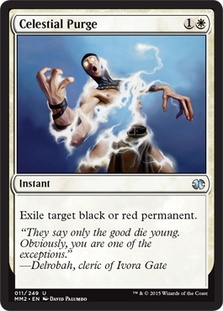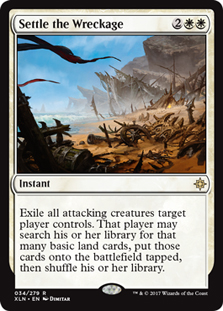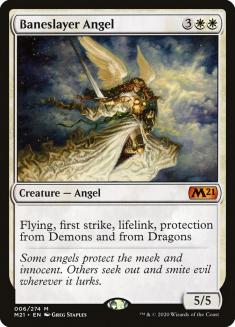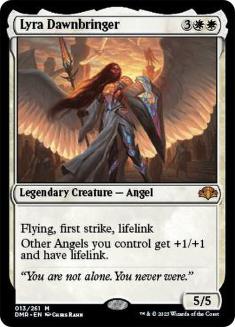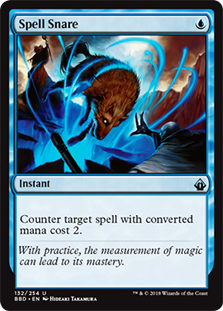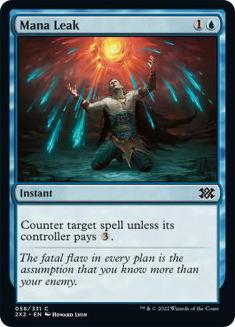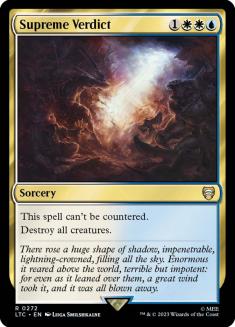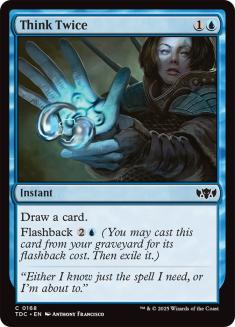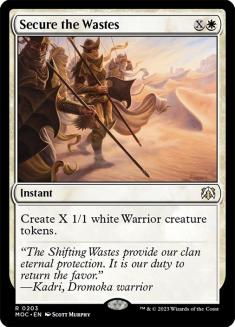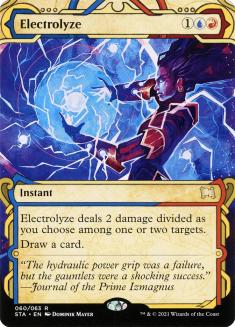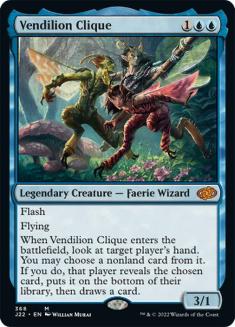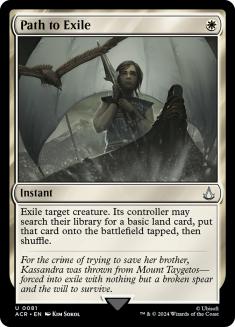“If you love something, let it go. If it doesn’t come back, you never had it. If it comes back, love it forever.” – Douglas Horton
Two months ago, when Ironworks was banned in Modern, I was forced to let go of something very close to me. Something so near and dear to my heart as a player that I was relieved to have a couple of months on the SCG Tour without a Modern event so I wouldn’t have to miss it so much.
Spending four mana has never felt more downright enjoyable, but some things just aren’t meant to be. It’s the wrong time, there’s too much going on, it’s not you, it’s not even me, it’s just the powers that be.
Cryptic Command, I’ll miss you.
Okay, maybe that was all a little dramatic, but I bet at least some of you reading this thought I was going to say Krark-Clan Ironworks by the end of it. That’s the key to a good short story, a twist.
Writing fundamentals aside, the void in Modern that was created by the banning of Ironworks took away the last really good reason I could give to play Jeskai Control and, by proxy, Cryptic Command, which leaves me a little lost in the format. The death of Cryptic Command was probably a long time coming, but the best deck in Modern being your best matchup is the exact kind of fuel you need to be optimistic.
Part of the problem I’ve been having since then is that there are plenty of great decks out there in Modern: Tier 1 decks like Dredge and Arclight Phoenix, ones that I like to play like Affinity and Burn, and even ones that can make you feel really smart like Amulet Titan and Whir Prison. The wealth of decisions makes it hard to know where to start sometimes, especially without a ton of Modern information flowing as the SCG Tour shifted towards Standard for bit.
What we do have, though, is the data from the Classics to guide our decisions. Let’s take a peek at what the last few Modern Classics have to offer about the metagame, shall we?
Creatures (3)
Planeswalkers (5)
Lands (25)
Spells (27)

Creatures (5)
Planeswalkers (3)
Lands (25)
Spells (27)

Wait a second. These are the results from Baltimore? Surely this must be a fluke? Cryptic Command is dead. How was there a control mirror in the final? Let’s just throw this one out, shall we? That time is done. Let’s just get serious. These results might just be a little stale. After all, it’s been a full month since that event.
Let’s just look at what we saw last weekend at the Modern Classic at SCG Syracuse.
Creatures (4)
Planeswalkers (3)
Lands (25)
Spells (28)

Ian is followed close behind by Azorius specialist Andrew Davis and the man secretly behind the Jeskai Control movement, Jonathan Sukenik, each with Top 16 finishes. I told you earlier that a good short story had a twist, but as the author here, this is a little more than I had even anticipated.
Cryptic Command is back, so I guess I’ve gotta love it forever.
So how did this happen? How is it even possible that, in a format where people are effectively winning the game as early as Turn 3 or 4, a deck like Jeskai or Azorius can even manage to keep up?
For starters, Path to Exile is by far the best reactive card in Modern and it’s pretty plain to see. The threats in Modern at the moment are volatile and strong. Cards like Death’s Shadow and Thing in the Ice can’t be killed by Lightning Bolt alone, Bloodghast and Arclight Phoenix are constantly being returned from the graveyard to the battlefield, and cards like Primeval Titan require immediate attention that only Path to Exile is really equipped to handle.
I could continue to break down all the cards here, but to save us all some time, I’ll let you know straight up the real secret about Cryptic Command decks in Modern. These control decks are good because the format is so fast, not despite it.
Whenever Modern is forced towards these hyper-streamlined linear strategies to keep up with the speed of the format, the decks generally boil down to doing one of three things:
- Putting as much power and toughness onto the battlefield as possible over the first three turns
- Doing something powerful that doesn’t care about how many stats are on the battlefield
- Disrupting and denying the above two strategies
So long as all the decks are mainly focused on doing one of those three things, none of them are even close to prepared for being interacted with easily by their opponent. This dynamic makes room for a control deck that can reliably put a wrench in the opponent’s plans early in the game and makes seemingly marginal gains from cards like Cryptic Command and Hieroglyphic Illumination into totally backbreaking effects.
In a format as powerful and deep as Modern, better ways exist to find a critical mass of answers than Teferi, Hero of Dominaria or Hieroglyphic Illumination. The biggest reason cards like Sphinx’s Revelation have fallen out of favor is that the format simply doesn’t demand such a high-investment, high cost spell to seal a game. So long as there are cheap tools that pull ahead while trading with the opponent’s cards, Cryptic Command will always be in the mix somehow, likely leading the charge.
For these reasons I expect to play the following list at my SCG Regionals this weekend.
Creatures (4)
Planeswalkers (2)
Lands (25)
Spells (29)

Not only do I expect that Jonathan could explain to me the rationale behind card choices I didn’t even know were card choices in this decklist (he’s done it before), I also expect that it’s the best Jeskai deck you can find for the weekend. After talking with him, he said the only change he would make is making the Circle of Protection: Red into a Secure the Wastes, so I’d make that one change and lock it in.
Before I get into juicy details like sideboard plans, I want to stop for a second and say that if it were not for Lightning Helix, I’d probably choose to play Azorius instead of Jeskai; but as it stands, I’ll never play Azorius so long as I live. Lightning Helix is a two-mana Cryptic Command in many of the hardest matchups for control to win and adds an entirely different dimension to the deck. The sacrifice you make is generally that you don’t get to play as many big winners like Terminus or various planeswalkers, but the gain is that you get to be the aggressor or at least threaten it in matchups where you want to. Most of the buzz tends to center around Azorius rather than Jeskai these days, and frankly I’m not standing for it. Give me Helix or give me death.
With that rant over, let’s talk about a few matchups.
VS Izzet Phoenix
Out:
In:
This matchup can be very strange, as your primary plan as Jeskai is to mill them out by running them out of threats. Most Izzet Phoenix decks only have a handful of actual cards that can kill you and are otherwise full of cantrips that give them the velocity to be consistent. This plan of beating all the cards in their deck means that, based on what you see, your sideboarding can need to change ever so slightly. For example:
- If you don’t see Blood Moon or Pyromancer Ascension, you probably don’t need so many Celestial Purges and can afford a Cryptic Command or Lightning Helix.
- If you see Young Pyromancer, keep in some more spot removal to keep it in check.
- If you expect them to respect your Angel package, simply sideboard them out for some Cryptic Commands to punish them.
Your Surgical Extractions primarily want to go after their Thing in the Ice and Arclight Phoenix, which gets tough because, ironically enough, you’re exiling them too much with your removal. If you get the chance to counter one and Surgical it, or Verdict it and use Surgical, it might be worth doing rather than spending a Path to Exile.
VS Dredge
Out:
In:
This is far and away the worst matchup for Jeskai in Modern and does require some luck and smarts to navigate through, but your winning matches go like this:
In Game 1, as soon as you see that they are Dredge and they choose to Dredge once, concede. The sideboard games can be long, grueling affairs and you’ll thank yourself for having every second.
In the sideboarded games, you must be willing to mulligan down as low as five cards to find a Surgical Extraction, since it’s basically our Leyline of the Void. When you have one, your primary targets should always start with Life from the Loam and Stinkweed Imp when you have the chance. Life from the Loam is their inevitability engine with Conflagrate and Stinkweed Imp makes the rest of their deck live, so stopping those first gives you the most time to work with to find a Snapcaster Mage or more Surgical Extractions.
When you do Surgical your opponent, take the time to mentally note the dredgers they have so you can know what to go after next. Other important cards are Lightning Axe and Assassin’s Trophy because they are the only ways they have to beat a resolved Angel, which is the easiest way other than Azcanta for you to win.
Once you have their dredger out of the way, hold out with your next Surgical Extraction to stop Bloodghast from enabling Prized Amalgams. Usually, if you’re able to do that correctly, you get to only have to worry about Conflagrate and Creeping Chill killing you, so don’t play too aggressively with your life total if you can avoid it.
VS Grixis Death’s Shadow
Out:
In:
While burning the opponent out isn’t very feasible, Electrolyze cleanly mops up a Snapcaster Mage or two that might be chipping away at your life total. As a rule of thumb, don’t move in on actually finishing out the game unless you anticipate dealing lethal within a two-turn window. Your patience will usually be rewarded and being too aggressive can let them steal games with Death’s Shadow.
VS Burn
Out (on the play):
In (on the play):
Out (on the draw):
In (on the draw):
Focus on killing creatures as early as possible and resolving your Lightning Helixes. Avoid fetching on the opponent’s turn to keep spectacle from being enabled without them acting first, and fight over actual damage spells, not cards like Light Up the Stage if they have them. Consider Searing Blaze in Game 1 when you can and avoid deploying Snapcaster Mage if your life is too low to afford it. Finding more Helixes will usually reward you for waiting on Snapcaster Mage anyway.
VS Tron
Out:
In:
In this matchup, you’re playing a tempo deck and it’s not uncommon to just run out a Snapcaster Mage to start the clock as early as possible. Keeping your opponent off Tron is almost impossible and the best you can really do is slow them down, so don’t be afraid to stop fighting over disrupting it if you think your hand has enough answers to weather a storm of Karns, Ugins, and Ulamogs (oh my!). A somewhat common play on that plan is to hold onto a Field of Ruin to destroy a Sanctum of Ugin with the trigger on the stack so they can’t search for another threat, or using Cryptic Command to counter their spell and bounce the Sanctum. Consider preserving your red sources of mana because of Ulamog and Ghost Quarter, lest your red cards get stranded.
VS Whir Prison
Out:
In:
Whir Prison decks without Thopter Foundry and Sword of the Meek tend to rely heavily on Crucible of Worlds, Ensnaring Bridge, and Academy Ruins to beat you, but usually Teferi and Cryptic Command do quite a good job of overcoming everything else, so keep that in mind. Depending on the new threats you see out of their sideboard, it might make sense to cut more Bolts and Electrolyzes to have more answers to Spellskite and Sai, Master Thopterist. Purge might be worth considering solely for Ghirapur Aether Grid, but it just comes down to what you see and what you expect.
VS Amulet Titan
Out:
In:
Running your opponent out of Titans is doable and usually the plan here. Beats with Clique or Secure the Wastes can catch your opponent off-guard and force your opponent to start acting if they’ve just been developing their mana. Cryptic Command bouncing a bounceland is an excellent tempo play when appropriate, and there are a lot of creative ways to play both sides of the matchup. It’s a real treat.
***
With all of that said, it’s funny to see that no matter how much things seem to change, the more they stay the same. No matter how cards available to us in Modern change, some archetypes never really disappear. Today, Public Enemy No. 1 is Izzet Phoenix, yesterday it was Ironworks, and tomorrow it will be something new. No matter what it is, though, I’d bet on Cryptic Command never being too far from the top tables.
Never has been. Never will be.


